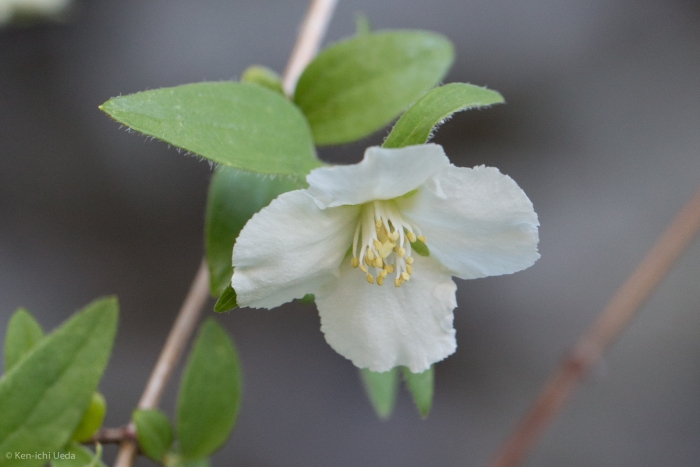Littleleaf Mock-Orange
(Philadelphus microphyllus)
Littleleaf Mock-Orange (Philadelphus microphyllus)
/
/

Ken-ichi Ueda
CC BY 4.0





























Estimated Native Range
Summary
Littleleaf Mock-Orange is valued for its fragrant flowers, which are particularly showy and can be a focal point in gardens. It is used in traditional gardens, natural landscape native plant gardens, drought-tolerant water-conserving gardens, and various municipal, commercial, and agency sustainable landscape and restoration projects. This shrub is well-suited to urban planting, border planting, and as a specimen in xeriscapes. It thrives in full sun to part shade, requires low amounts of water, and prefers well-drained soils. While generally disease-resistant, it can occasionally suffer from powdery mildew or rust. Pruning after flowering helps maintain its shape and encourages vigorous growth.CC BY-SA 4.0
Plant Description
- Plant Type: Shrub
- Height: 4-6 feet
- Width: 4-6 feet
- Growth Rate: Moderate
- Flower Color: White
- Flowering Season: Spring
- Leaf Retention: Deciduous
Growth Requirements
- Sun: Full Sun, Part Shade
- Water: Low
- Drainage: Fast, Medium
Common Uses
Bee Garden, Bird Garden, Border Plant, Butterfly Garden, Deer Resistant, Drought Tolerant, Fire Resistant, Fragrant, Hummingbird Garden, Low Maintenance, Rabbit Resistant, Showy Flowers
Natural Habitat
Rocky slopes, canyon walls, and desert scrublands in the Southwestern USA and Mexico
Other Names
Common Names: Desert Mock Orange, Littleleaf Mockorange, Desert Syringa, Kleine Jasmijn, Småbladig Schersmin
Scientific Names: , Philadelphus microphyllus, Philadelphus occidentalis, Philadelphus microphyllus var. ovatus, Philadelphus minutus, Philadelphus microphyllus var. linearis, Philadelphus microphyllus subsp. occidentalis, Philadelphus microphyllus var. occidentalis, Philadelphus microphyllus f. zionensis, Philadelphus microphyllus subsp. minutus
GBIF Accepted Name: Philadelphus microphyllus A.Gray